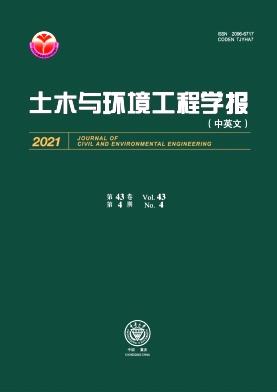Implementing an Urban Bicycle Highway on Pedestrian Traffic - Finding a Traffic Control Strategy with Optimal Coordination for the City Center of Munich
Q2 Engineering
Tumu yu Huanjing Gongcheng Xuebao/Journal of Civil and Environmental Engineering
Pub Date : 2020-01-01
DOI:10.37421/JCDE.2020.10.365
引用次数: 0
Abstract
Bicycle highways are specially designed infrastructures allowing cyclists to travel at a considerable speed through different environments. These elements in densely built urban areas are difficult to understand, since many requirements and standards need to be met. Serving all modes of traffic with acceptable efficiency and implementing a bicycle highway design is a challenge and therefore the aim of this study is to define a strategy for bicycle road traffic control in an urban area, the city center of Munich, which will improve its traffic efficiency. The current situation of the studied area was developed in PTV VISSIM to achieve the objective. Firstly, the base model was calibrated and validated to match the present state and synchronized separately for bicycles and cars. Five alternative models were developed based on coordinating and developing the bicycle highway infrastructure. Attempts were made to compare the models on efficiency measurements and the models were evaluated to analyze traffic safety parameters. In this assessment, interaction between pedestrians and bicycles was given priority. The research result shows improvement of the traffic efficiency of bicycle highways within the alternatives proposed. The loop pause time decreased up to 7%, the number of stops decreased by 28%, bicycle travel time has been reduced up to 7%. The results of this research show improvement of the traffic efficiency of bicycle highways within the alternatives proposed.基于行人交通的城市自行车公路的实现——寻找慕尼黑市中心最优协调的交通控制策略
自行车公路是专门设计的基础设施,允许骑自行车的人在不同的环境中以相当快的速度行驶。在建筑密集的城市地区,这些因素很难理解,因为需要满足许多要求和标准。以可接受的效率服务于所有交通方式并实施自行车公路设计是一项挑战,因此本研究的目的是确定慕尼黑市中心城区自行车道路交通控制策略,这将提高其交通效率。为了实现这一目标,在PTV VISSIM中开发了研究区域的现状。首先,对基本模型进行标定和验证,使其与当前状态相匹配,并分别对自行车和汽车进行同步。在协调发展自行车公路基础设施的基础上,提出了五种可供选择的模式。在效率度量方面对模型进行了比较,并对模型进行了评价,分析了交通安全参数。在本次评估中,行人和自行车之间的互动被优先考虑。研究结果表明,在提出的方案范围内,自行车公路的交通效率有所提高。环路暂停时间减少了7%,停车次数减少了28%,自行车行驶时间减少了7%。研究结果表明,在提出的方案中,自行车公路的交通效率有所提高。
本文章由计算机程序翻译,如有差异,请以英文原文为准。
求助全文
约1分钟内获得全文
求助全文
来源期刊

Tumu yu Huanjing Gongcheng Xuebao/Journal of Civil and Environmental Engineering
Engineering-Architecture
CiteScore
1.30
自引率
0.00%
发文量
5346
 求助内容:
求助内容: 应助结果提醒方式:
应助结果提醒方式:


